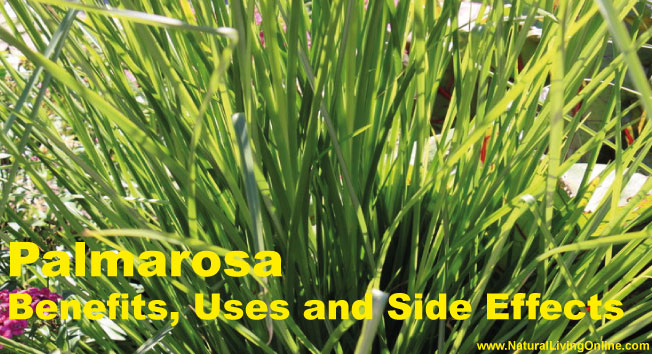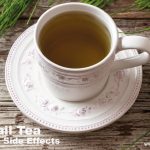What is aromatherapy? Aromatherapy is the use of essential oils to promote physical, mental, and emotional well-being. It can be used for both preventative care and treatment of various health issues. Essential oil blends are an important part of aromatherapy because they help you choose which oils to use when creating your own custom blend. This article will provide a beginner’s guide on essential oil blending in order to get started with this ancient practice!
The Basics of Blending Essential Oils
When blending essential oils, it is important to consider the following factors:
• The oil’s therapeutic properties
• The oil’s aroma or scent profile
• The oil’s chemistry and how it will interact with other oils
Therapeutic Properties of Essential Oils
Each essential oil has its own unique therapeutic properties. Some oils are used for emotional well-being, others promote healthy skin and hair, while some can even help with digestion or respiratory issues! This information is important to understand when creating your own essential oil blends because you may want certain oils in the blend based on their positive effects.
The therapeutic benefits of essential oils can be attributed to their chemical composition. Essential oils are made up primarily of volatile aromatic compounds that exert physiological effects on the body when inhaled or applied topically. These chemicals bind with your olfactory receptors and/or skin cells, influencing how you feel both emotionally and physically.
When creating your own blends, it is important to consider the therapeutic properties of each oil and how they will work together. For example, if you are looking for a blend that promotes relaxation, you may want to include oils like lavender, chamomile, and frankincense. If you are seeking a blend to support healthy skin, you may want to consider oils like lavender, geranium, and tea tree.
Keep in mind that the therapeutic properties of essential oils can vary depending on the distillation process used, as well as the climate and soil where the plants are grown. So while all lavender oil may not have the same therapeutic properties, you can be confident that the therapeutic properties of lavender oil are reliable.
When seeking an essential oil blend, look for one where each individual oil was distilled using steam distillation. This ensures the most effective and potent therapeutic benefit from the oils included in the formula.
Aroma Profile of Essential Oils
Essential oils have unique aromas or scent profiles. Some are spicy, others are herbaceous and earthy, while some can be fresh or citrus-like! Knowing an oil’s aroma profile will help you choose which other essential oils to blend with it for a more balanced fragrance that is pleasing to the nose. Understanding how these scents work together will help you craft your own recipes that everyone can enjoy.
For instance Essential oils like Ginger and Cinnamon Bark both have spicy aromas. They mesh well together when blended with other essential oils, such as Orange or Grapefruit to create a warm and inviting fragrance! Aromatic scents can also be used for more medicinal purposes. Essential oil blends that focus on herbaceous scents tend to help aid in digestion, while oils with fresh scents are often calming and relaxing to the senses.
Aromatic Scenarios:
For an uplifting fragrance try combining Rosemary, Lemon, Lavender or Peppermint essential oils! These aromas will help you feel more refreshed after a long day. If you want something that’s grounding for your mind and body try blending Cedarwood, Frankincense or Patchouli oil with a sweet scent like Bergamot or Mandarin. These combinations can also be helpful when you’re trying to relax and unwind after a long day.
No matter what your needs are, there is an essential oil blend out there for you! By understanding the different aroma profiles you can create a signature scent that’s the perfect fit for your home.
Chemistry of Essential Oils
Each essential oil has its own unique chemistry, which typically consists of a natural chemical compound called an ester and a hydrocarbon chain (which is what makes it fragrant). The interactions between these different chemicals produce the scent profile of each essential oil. This information is useful to know when creating your own essential oil blends because you will want the scents of all oils in a blend to work well together and not be overpowering or clash with one another.
If you have ever been close to a lavender plant, then you likely know that the scent is extremely distinct and recognizable. Many people also find it calming for aromatherapy purposes. That’s because one of its most dominant chemical constituents is linalool , which has a floral scent similar to lilac with woody undertones . It can be useful as an anti-inflammatory or analgesic agent on top of being relaxing.
Lavender oil contains about 40% linalyl acetate (a combination of esters) and 28% linalool (the hydrocarbon). This means that when using lavender essential oil in your DIY blends, there will be enough ester presence to give off the familiar lavender scent profile while the linalool will add the woody tones.
If you would like to create a blend with a citrus scent, you might choose lemon oil as one of your ingredients. Lemon oil has a high concentration of citral , which is responsible for that unmistakable lemon smell. It also has refreshing and uplifting properties, making it perfect for use in blends designed to promote energy and vitality.
Citral is an aldehyde (a type of hydrocarbon) and makes up about 60-85% of the essential oil . This means that when using lemon oil in your blends, there will be plenty of citral present to give off the characteristic lemon smell. The other chemical constituents in the oil such as limonene and geraniol will also be present but in much lower concentrations.
When creating your own essential oil blends, it can be helpful to know the chemistry of each ingredient you are using so that they work well together and don’t clash with one another (think about putting lavender, lemon, and peppermint oils into a blend – those scents would not mix well!)
You should now have enough information to create two simple DIY essential oil recipes! Keep on reading for instructions on how to make an energy-boosting citrus blend as well as a deodorizing spray .
Essential Oil Blending for Beginners: A Simple Recipe!
how to make an energy-boosting citrus blend
Top Essential Oils for Energy Are you feeling lethargic? It’s possible that your diet is the reason why. We eat on the run, or grab something quick without realizing how much sugar or caffeine it has in it! Instead of reaching for an energy drink full of chemicals, try this simple essential oil blend instead! Here are some other great reasons to use Citrus blend: -This refreshing scent will boost your mood and wake up tired muscles -Citrus scents promote feelings of happiness and cheerfulness -A study showed that people who smelled lemon essential oil had improved moods right away The best part about this recipe? You probably already have these oils sitting around at home! Just a few drops each (and maybe a new diffuser) and you’ll be feeling like a whole new person.
What You Need: (makes one application of the essential oil blend) -Lemon Essential Oil -Orange Essential Oil -Grapefruit Essential Oil -Eucalyptus Radiata
Directions: In your diffuser, combine all oils for 30 minutes to an hour. If you don’t have a diffuser…add some drops to your palms and inhale deeply! This will help open up your sinuses too! Make sure not to use this mixture right before bedtime because of the citrus scents in it. They may cause restlessness or trouble falling asleep. Try using Citrus Fresh during the day instead so that you can really enjoy its energizing properties!
This is just one example of a simple essential oil blend. Feel free to experiment with different oils and proportions to create your own unique blends! As you get more experience blending essential oils, you will start to develop a better sense of what combinations work well together. Have fun and enjoy the process!
This website does not provide medical advice.
All information provided on this website, and on associated social media networks, including but not limited to texts, images, and numbers are for general information purpose only. It is not intended as medical advice and it does not include all possible precautions, side effects, or interactions that may occur. Neither NaturalLivingOnline.com nor its author/founder take responsibility for how you use this information. Statements contained on NaturalLivingOnline.com have not been evaluated by the FDA. You should conduct thorough research via multiple sources and consult your physician or qualified doctor before using any essential oil or herbal remedy. Information on NaturalLivingOnline.com must not be relied upon for medical, legal, financial or other decisions.













